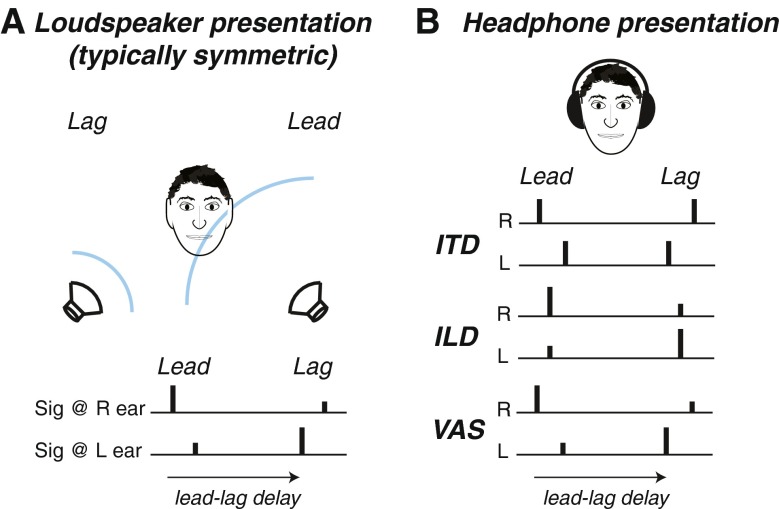FIG. 2.
Common stimulus paradigms for study of the precedence effect. A Free-field stimuli are presented from loudspeakers, most typically positioned symmetrically about the subject at a distance of 1–2 m. The “lead” speaker (right) emits a signal (e.g., a broadband impulse), which is followed after a brief delay by an identical signal from the “lag” speaker (left), typically construed as a simulated “echo.” The delay between the lead and lag signals, the “lead-lag delay,” is the parameter of primary interest in most studies: Although the lead and lag signals carry two separate sets of spatial acoustic cues, dependent on source azimuth and elevation, the complete stimulus is usually perceived as a single event at one location at brief lead-lag delays. B Stimuli presented over headphones are often used to simulate aspects of free-field lead-lag presentation. Interaural time difference (ITD) stimuli, the most common variant, feature pairs of equal-intensity stimuli presented through each earphone with slight asynchrony (<1 ms) to produce intracranial (inside-the-head) lateralization of the lead and/or lag. Interaural level difference (ILD) stimuli feature paired stimuli in each channel with intensive asymmetries (but no asynchrony) to produce lateralization of the lead and/or lag. Virtual auditory space (VAS) stimuli, created by filtering stimuli with the head-related transfer functions for the desired lead and lag virtual locations, feature both ITD and ILD cues as well as spectral shape cues in their natural combinations.

